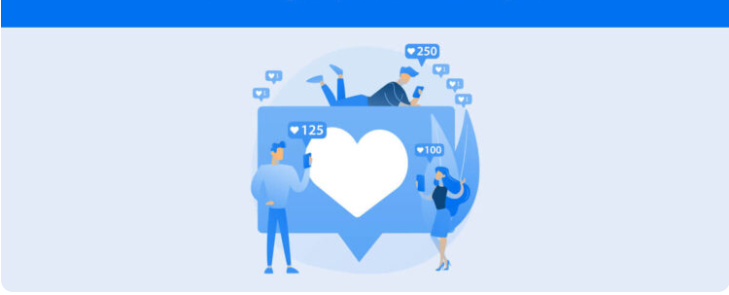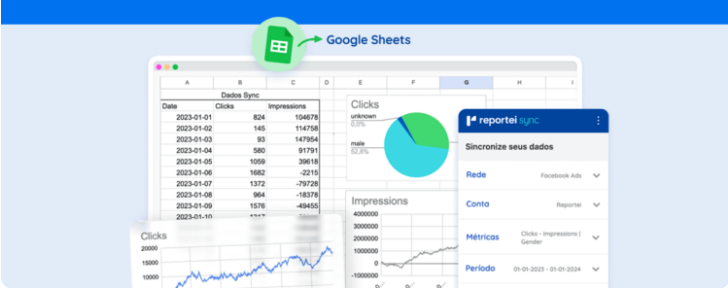Learn what customer onboarding is, which steps should be followed in this process and how to apply them in agencies and other companies.
When we talk about customer onboarding we are referring to the path that turns a purchase into perceived value quickly, clearly, and without many obstacles.
In other words, it is the process that helps the client understand how your solution works, put it into practice, and prove results in the shortest time possible.
Below, check out a practical guide on what onboarding is, why it is critical for retention and growth and which steps should be followed to help standardize and scale this work. Let’s go.
What is customer onboarding?
The customer onboarding is nothing more than a set of planned actions to guide new users from hiring to the first results.
To this end, it usually involves welcome communication, expectation alignment, technical implementation, training, follow-up, and the transition to the continuous use of the solution.
Indeed, in software companies, marketing agencies, and service businesses, this process is crucial for reducing churn, accelerating adoption, and opening doors for expansion such as upselling or cross-selling.
After all, when onboarding is well-structured, the client understands what will happen, when, and why.
That is, he receives proactive support, learns to use the right resources, proves results quickly, and sees a plan of evolution..
All of this helps build trust and avoid the feeling of being left alone after the sale.

Benefits of well-done onboarding
But before moving on to how to do it, it’s worth highlighting why investing in good onboarding brings returns from the first month.
As mentioned above, when the client’s onboarding is clear, guided, and results-oriented, the company reaps benefits that impact the entire operation, from customer success to sales.
See below the main ones:
- Reduction of churn and refunds, clients who achieve value early have less reason to cancel.
- Increase in adoption, more active users using the right features with direct impact on success metrics.
- More efficient sales cycle, real cases and testimonials from successful onboardings become assets for the sales team.
- Revenue expansion, those who trust and see results purchase add-ons, more robust plans, and additional services.
- More predictable operation, finally, standardized processes reduce rework, errors, and reliance on individual heroes.
Together, these effects accelerate the gain of trust from customers, increase satisfaction, and create fertile ground for sustainable growth.
With a well-built foundation in onboarding, the next steps – continuous support, upsell, and brand promotion – flow much more consistently.
Steps of the customer onboarding process
Now that you know the benefits of customer onboarding, it is time to check the step-by-step to apply this process in your company.
Therefore, below we have prepared a practical roadmap for you to adapt. For each step, we include examples related to the routine of marketing agencies. Follow along.
1. Pre-onboarding
Even before the kickoff or the start of a new client’s project, it is important to pave the way for faster and more assertive decisions.
Therefore, gather essential information such as business objectives, target audience, channels already used, deadlines, and success criteria, and validate what already exists, what is missing, and what depends on the client.
By performing this diagnosis, it is possible to avoid rework, anticipate risks, and prepare the team for a smooth start.
In the case of an agency, for example, the suggestion is to send a structured questionnaire about media history, funnel, goals, budget, necessary accesses, advertisement accounts, Google Analytics 4, CRM, and those responsible on the client’s side.
2. Welcome and expectation of value
Next, formalize the journey. A welcome email with the schedule for the coming weeks, responsibilities, support materials, and a forecast of the first gains aligns expectations and reinforces the commitment to results from the start.
Thus, the client knows what will happen, when, and why, and you gain traction from the first day of work..
In the case of the agency, it is possible to share a 30-day timeline with clear milestones, gathering of inputs and briefing, media planning and creation, launching the first campaigns, and reviewing with the client.
You can even use Reportei’s Timeline to make these records from both the beginning of the project and its progress. Check out how it works in the video below.
3. Kickoff
With the groundwork prepared, use the kickoff meeting to consolidate decisions, such as
- validating goals, responsibilities, and agreements between the teams,
- defining KPIs, and review dates,
- and registering the success plan.
This conversation prevents misunderstandings, accelerates approvals, and creates a shared direction, especially when we talk about the relationship between a marketing agency and a client.
4. Implementation and configuration
Next, enter the customer onboarding execution mode. That is, in the case of an agency,
- do integrations, imports, installation of tags/pixels, and access releases,
- standardize nomenclatures, UTMs, and events,
- document everything in a knowledge base.
By implementing in an organized way, you facilitate measurement, scalability, and future optimizations..
5. Practical training
Furthermore, to accelerate the adoption of your product or service, offer short training sessions focused on what generates immediate value.
For example, you can arrange live meetings to answer questions, make decisions, or simply help the client’s team progress with the project.
A marketing agency can also use these moments to conduct a briefing review, approve creatives, and align the first campaigns.
6. Quick wins
With the operation up and running, prioritize quick wins that prove impact.
After all, a visible result in days, not months, reduces anxiety, strengthens trust, and unlocks new approvals.
In the routine of an agency, this might translate into activating remarketing campaigns to reduce CPA in the first weeks, testing a brand search to capture existing demand, or running a lead ads form to try to accelerate MQLs.
7. Follow-up and initial NPS
In the first weeks of customer onboarding, along with the training, also maintain short check-ins to monitor adoption, answer questions, and adjust paths..
Also, take the opportunity to measure initial satisfaction NPS, and record learnings. This quick feedback cycle prevents small deviations from becoming major issues.
8. Transition to routine
Finally, after the period of greater intensity, reduce the cadence and transition to a predictable operation.
To do this, establish a routine of monthly follow-ups and quarterly strategic reviews to discuss progress, deliveries, and opportunities for project expansion.
In the case of the agency, for example, you might plan the adoption of new channels into the strategy, like TikTok or LinkedIn Ads, and organize a promotional calendar integrated with seasonal events.Additionally, document the customer onboarding process in order to ensure clarity at each step and avoid the main obstacles that may arise along the way.
In this way, you accelerate problem-solving, reduce individual dependencies, and convey security to both the team and the client.
Which tools to use in customer onboarding
For onboarding to move from concept to reality with consistency and scale, it is worth combining a small ecosystem of tools that help ensure visibility of the stages, agile communication, learning registration, and real-time proof of value.
Below, check out the main areas that deserve your attention and how each contributes to the customer experience.
- CRM and customer success to organize stages, tasks, and health score pipelines, playbooks, and automations.
- Help desk and knowledge base, i.e., a hub for articles, tutorials, and FAQ. This can help reduce tickets and standardize responses to customer queries.
- Communication, use email for formal cadence, platforms like Slack/WhatsApp/Telegram for quick alignments, and shared calendar for trainings or meetings.
- Interactive video guides, short recordings, for example on Loom, and product tours help those who learn better visually.
- Forms and signatures, collect business information and ensure clear approvals.
- Dashboards and reports, to track results in real-time and support the value narrative, including for the client’s management.
In summary, more than isolated tools, what differentiates a high-performance onboarding is the synchronization among them.
When everything communicates, the operation gains predictability, and the client sees value sooner, exactly what supports retention and growth.
Marketing Checklist for Clients
Want to standardize client onboarding at your agency and gain speed? Then it’s worth creting a marketing checklist.
It is a comprehensive material designed both for those starting in marketing and for agencies and freelancers who wish to standardize processes and structure strategies with clarity and efficiency.
Altogether, there are 24 simple and quick steps that together allow you to:
- Standardize your marketing processes,
- Track and monitor your results in real-time,
- Replicate good practices or actions in other businesses,
- Get organized and achieve results more quickly.
That is, you can use the checklist as an implementation trail to mark what has been done, keep the team aligned, and ensure consistency in delivery.
Finally, it also works as a quality guide, great for training new team members and setting expectations with your clients.
FAQ: Frequently asked questions about customer onboarding
Before we close, we also gathered quick answers to the most common questions about onboarding. Check out:
Onboarding is proactive and aims to lead the client to the first value with a clear plan. Meanwhile, support is reactive, focusing on resolving questions and specific incidents.
It depends on the complexity. In simple SaaS, 7 to 14 days are usually sufficient. In more robust solutions or consultative services, 30 to 60 days is a common period. The important thing is to have measurable milestones.
Among the main ones, you can monitor information related to activation, adoption of key features, time to first value (TTV), health score, initial NPS, and number of tickets per client.
Ideally, you can offer both: live sessions for interaction and short on-demand recordings for scalability and quick reviews.
Reinforce roles and deadlines in the kickoff, use automatic reminders, and maintain a plan B to proceed with what is possible without blockages.
Choose a quick win aligned with the main objective: a clear report, an automation that saves time, or a low-risk campaign with visible impact.
In general, when the client achieves the first value, masters the basics, and there is a defined follow-up cadence.
Yes, standardize the backbone (steps, materials, SLAs) and personalize goals, examples, and quick wins according to the context of each account.



